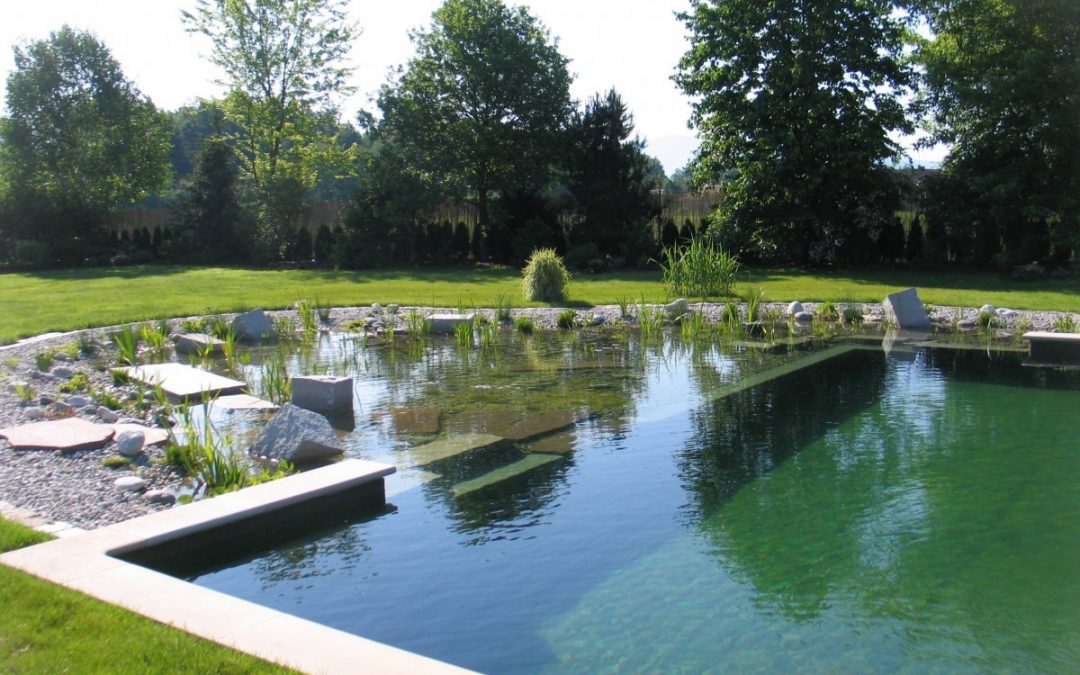The organic pool has entered the chat. The movement to swim in natural bodies of water, instead of artificial, stagnant bodies of water full of chemicals is growing momentum. Several decades ago in Austria, people were used to swimming in wild, pristine lakes in the summer. When they moved to the cities, they wanted the same experience. When the first natural pools started to be built in Austria, people were amazed. The idea spread to Germany. And then all across Europe, as far as Britain and Ireland. And now, the idea is taking hold in Australia.
A lot of people don’t like the artificial smell of chlorinated pools, or the “dead zone” of water that is created. And, people can also get red eyes, green hair, and skin problems from the chlorine. So “organic” or “natural” pools have started to appear. There is a whole online community, where people are teaching other people how to self-build natural pools. And, these pools are very inexpensive and relatively easy to construct. Additionally, they become a nature strip – a paradise for local creatures and birds. David Pagan Butler of Organic Pools tells us how we too could have a little piece of paradise in our garden.
Organic Pool Construction
A natural swimming pool is simple to construct and works perfectly. Indeed, there are many people who would have you believe this is too complicated for the nonprofessional. That is nonsense. It is hard work but deeply rewarding and completely achievable.
Why do we smile, or for some of us, struggle to contain our gushing beams of joy, the first time we see a natural swimming pool? Is it because inside we know this is so right. It is giving something back to nature by the creation of a small wilderness? Perhaps we have always secretly wanted to jump into deep luscious pools of freshwater. But we have been frightened off by decades of myths listing battalions of hazards awaiting any adventurous swimmer.
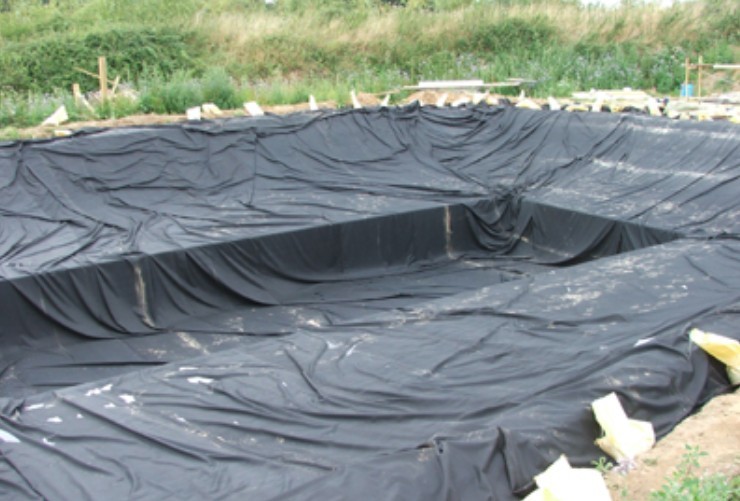
Building an organic pool
Organic pool: Nature
Today, flourishing on a tide of awareness, we see living freshwater with fresh vision. Thankfully now, we can jump in as happily as an otter. A natural swimming pool, or the name I prefer – organic pool, has been the most magical addition to our home.
It is a beautiful place to observe nature throughout the seasons, bringing us closer to wildlife. The multitudes of species that now live in the pond are an endless fascination to my children. They spend hours observing them from the small jetty which traverses the shallows. They dangle down their nets to catch water boatmen or dragonfly larvae for a close-up look at these incredible creatures.
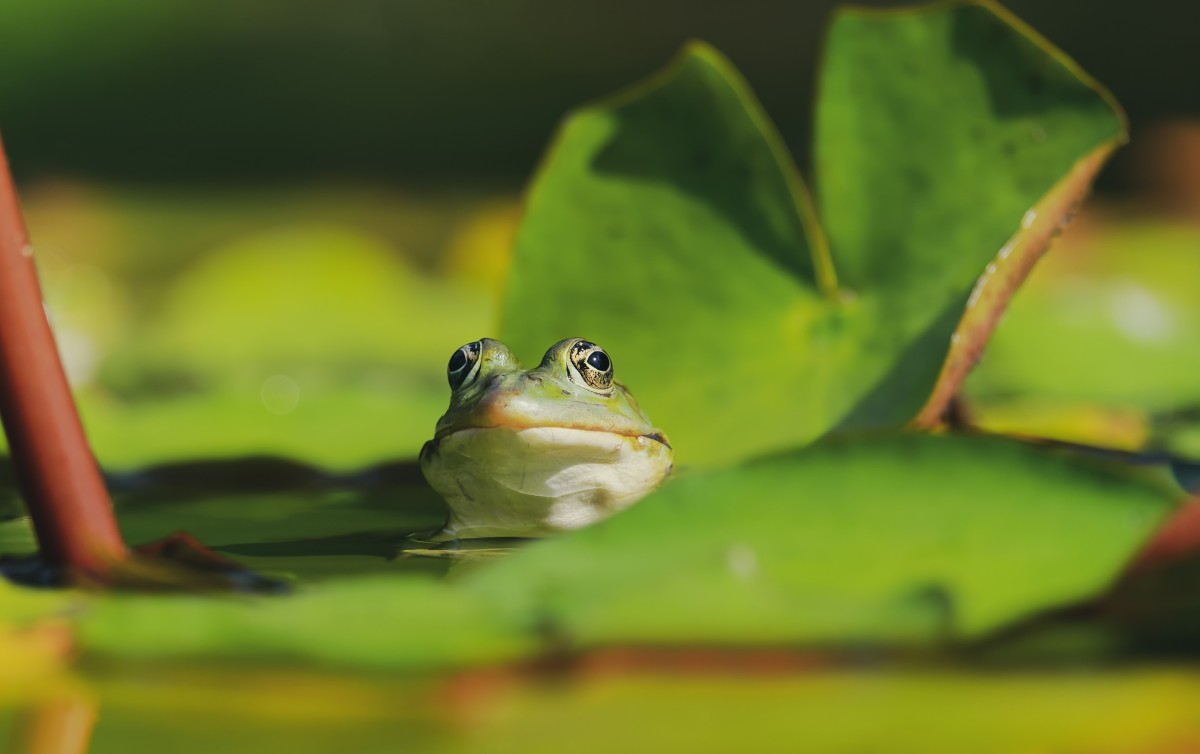
Creatures will come to say hello in your organic pool.
Then come the birds, visiting the pond in the morning and evening. They skim the surface to drink or bounce with delicious splashes to bathe. Dragonflies patrol, buzzing into skirmishes with intruders. Bats flit in and out of their invisibility cloaks in the evening glow reflected on the pond. And sometimes, in the skidding sunbeams of the morning, I may catch the iridescence of a kingfisher feeding on water beetles.
This pond has become another stepping stone for wilderness. Local native flora and fauna has found its way in and flourished, increasing local biodiversity. If we create more ponds, we will contribute to re-establishing our country’s diminishing freshwater network.
Organic Pool Swimming
And of course, there is the swimming. Our children are learning to swim in a healthy environment free from the unpleasant effects of disinfectants found in most pools. I imagine, one day we will look back and wonder how we ever thought it was reasonable to let our children swim in anything other than natural water.
Until now only people with a fair amount of cash have been able to consider having one of these pools built for them. But there is a different way. I built my organic pool for roughly $12,000. And knowing what I know now, I could do it for considerably less. It takes a lot of work but, after all you’ll be saving tens of thousands of dollars by building it yourself, and I can’t think of any work more rewarding than creating a pool. Once you see how easy it is to construct one of these pools, the process will be demystified and you’ll think it’s a project you could happily be immersed in.
Organic pools work with nature to provide clean healthy water for swimming. Plants and animals in the pond condition the water without the use of chlorine or other disinfectants. So the water doesn’t sting your eyes, bleach your skin, corrode your teeth or make your swimming trunks fall apart. Instead, the water holds a vibrant and diverse ecosystem, teeming with micro-organisms that constantly filter and devour any human pathogen that has the misfortune to plop in.

Not enough room for a large pool? Try a plunge pool.
Sections
In the Organic Pool, the area is divided into two sections, the swimming zone and the regeneration zone. The regeneration zone contains the plants so is also referred to as the planted zone. The pool has the deep swimming zone in the middle surrounded by the planted zone. The planted zone should represent at least half of the total area of the pool, and it is here that most of the water conditioning occurs.
The water is circulated throughout the whole pool. If a pool is large enough, with enough deep areas, then it can rely upon natural convection currents and surface wind movement to maintain the water circulation. If the pool is smaller, or the regeneration zone proportion of the whole is reduced below half, then technical equipment can provide the circulation and filtration.
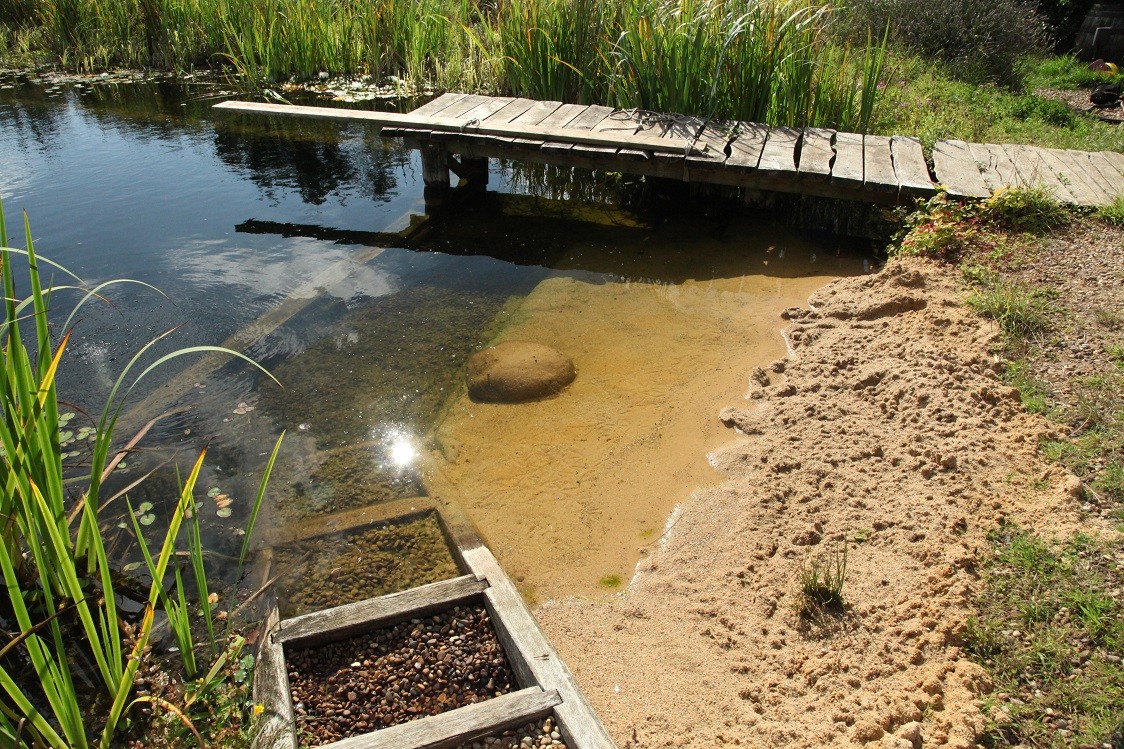
You can even install a little sandy beach in your organic pool area.
Chemicals
Conventional chorine pools can expect a build-up of chemical residues, so the pool needs to be drained out and the water changed from time to time. The water in an organic pool, on the other hand, never needs to be changed because it is constantly being maintained by the pool’s ecology. This equates to a huge saving in precious water resources.
Because tap water contains chemicals that interfere with how a natural pond works, it is better to fill your pool with rainwater. All the rainwater that falls on our house is collected and pumped to the pool. Even better, it is quite simple to construct devices to divert the first flush of roof water away, reducing the amount of detritus making its way into the pool. It may still take many weeks or months to fill the pool, but if you are making the pool yourself, you will find that it fills up as you are working on the project.
The laboratory water tests for my organic pool showed, not only was it perfectly safe for swimming, it was good enough to drink. It comfortably exceeded drinking water standards in all parameters tested.

Organic pool: DIY Help
In 2007 I made my organic pool with the simplest circulation system I could devise, using only partially competent DIY skills, standard domestic plumbing pipes and bubbles. At the time, I had no idea it was such a novel approach but it turned out to be the world’s first bubble-powered Natural Swimming Pool. Compared to a commercially-installed pool, it was ultra-low energy and a fraction of the cost to build. I then effectively made the design open source, by just charging a small amount for my DIY film “Make a Natural Swimming Pool” and my Organic Pools DIY Manual.
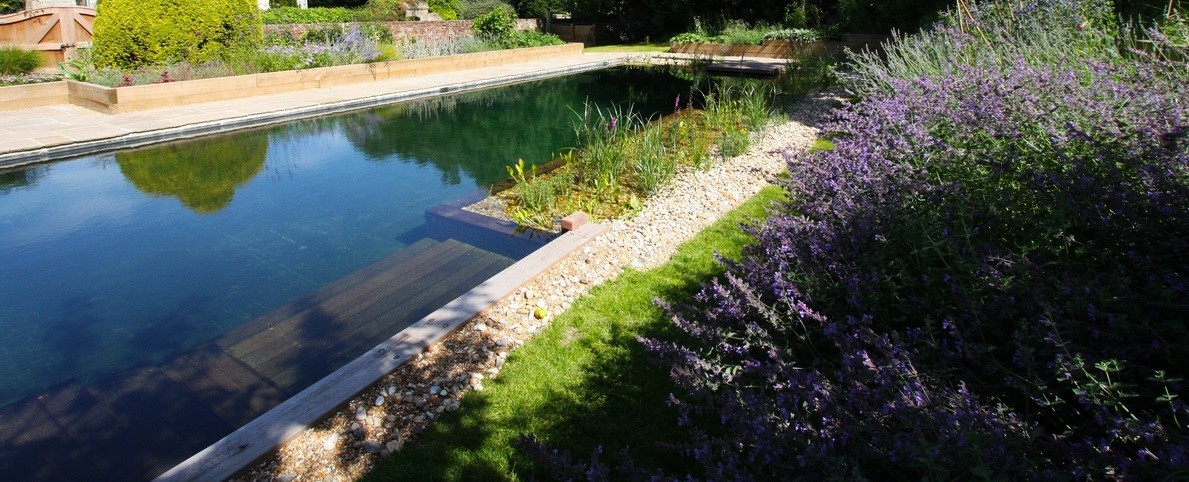
The Idea Spreads
Since then, all over the world, others have taken up my design and applied it to their particular location. The pool was made for the UK climate. But the design has proved remarkably robust for a range of conditions. This is from the frozen winters of Canada to the tropics of Brazil. Indeed, interest for these pools has proved particularly keen for those in warmer climates. I suppose I should not have been surprised by this. Now there are examples in Goa, Bali, Ecuador, South Africa and Thailand. And of course, in Australia.
It is possible to make an organic pool with a swimming pool physically separate from the planted filtration bed. This is suitable for those who prefer their pool to look more like a conventional swimming pool. But it may also be suitable for some tropical locations where it is important to keep the local wildlife separated from swimmers. An organic pool built in South Africa has the planted filter bed surrounding the swimming area. But it is physically separate with a wall that doubles as a path around the swimming pool. The owner is now proud to have wild turtles living in his regeneration zone.
This DIY approach to making organic pools has led to more people rediscovering the joy of swimming in freshwater and simultaneously helping biodiversity for their local ecology. ■
Perhaps you’d prefer to swim in the sea? Then check this out!

Editor for Silver Magazine Gold Coast
